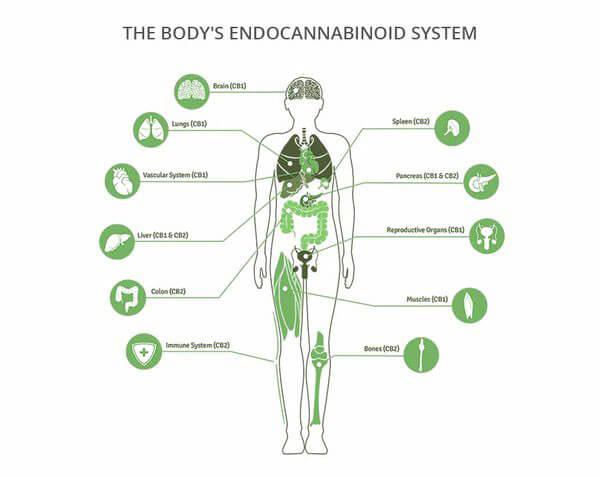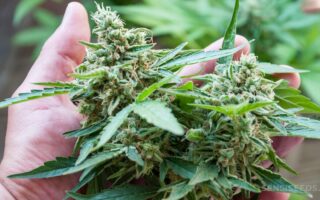In a world increasingly curious about the therapeutic potential of cannabis, the importance of cannabinoid education has never been more pronounced. As legal access expands and public interest grows, individuals find themselves navigating a complex landscape of compounds, each with unique properties and effects. Cannabinoid education serves as a compass in this uncharted territory, guiding consumers, healthcare professionals, and researchers alike through the intricacies of cannabinoids like THC, CBD, and their lesser-known counterparts. This article delves into the significance of understanding these compounds, the impact of informed choices, and the vital role education plays in shaping a responsible and informed approach to cannabinoid use. Join us as we unravel the myths, spotlight the science, and empower readers with the knowledge needed to explore the multifaceted world of cannabinoids.
Table of Contents
- Understanding Cannabinoids: Types, Effects, and Therapeutic Potential
- Navigating the Science: The Endocannabinoid System and Its Role in Health
- Practical Applications: How to Safely Incorporate Cannabinoids into Your Wellness Routine
- Building Knowledge: Resources and Strategies for Effective Cannabinoid Education
- Q&A
- Key Takeaways
Understanding Cannabinoids: Types, Effects, and Therapeutic Potential
Cannabinoids are versatile compounds derived from the Cannabis plant, each possessing unique properties that contribute to their effects on the human body. The most well-known cannabinoids include THC (tetrahydrocannabinol) and CBD (cannabidiol), but many others exist, such as CBG (cannabigerol) and CBC (cannabichromene). Each type interacts with the endocannabinoid system differently, influencing a variety of physiological and psychological responses. The effects of cannabinoids can range from psychoactive experiences associated with THC to the calming effects of CBD, making them valuable for both recreational and medicinal purposes. This diversity is a result of the various cannabinoid receptors like CB1 and CB2, which serve to mediate these interactions.
The therapeutic potential of cannabinoids is expanding as research continues to uncover their benefits. Some of the documented effects include:
- Analgesic properties: Effective in managing chronic pain.
- Anxiolytic effects: Helpful in reducing anxiety and stress levels.
- Antiemetic capabilities: Useful in alleviating nausea, particularly in chemotherapy patients.
- Anti-inflammatory properties: Potential relief for inflammatory diseases like arthritis.
To better understand the characteristics and potential impact of different cannabinoids, the following table summarizes various types and their primary effects:
| Cannabinoid | Main Effects |
|---|---|
| THC | Psychoactive, pain relief, appetite stimulation |
| CBD | Anti-anxiety, anti-inflammatory, seizure reduction |
| CBG | Antibacterial, anti-inflammatory, potential neuroprotective |
| CBC | Anti-inflammatory, potential antidepressant |
Navigating the Science: The Endocannabinoid System and Its Role in Health
The endocannabinoid system (ECS) represents a complex network of receptors, endogenous cannabinoids, and enzymes that play a crucial role in regulating various physiological processes. At the heart of the ECS are CB1 and CB2 receptors, which are distributed throughout the brain, nervous system, and immune cells. This intricate system is responsible for maintaining homeostasis and can influence critical functions such as mood, appetite, sleep, and pain perception. Research has identified key functions of the ECS, highlighting its potential to impact numerous health conditions, including:
- Anxiety and Stress Relief: The ECS helps modulate emotional responses and stress levels.
- Anti-inflammatory Responses: CB2 receptors play a vital role in immune function and inflammation.
- Pain Management: Activation of the ECS can alleviate chronic pain by inhibiting pain pathways.
- Neuroprotection: The ECS may protect against neurodegenerative diseases through its regulatory functions.
A deeper understanding of the ECS is fueling interest in cannabinoid therapies and their potential applications in medical science. Current studies suggest that phytocannabinoids, such as THC and CBD, can interact with the ECS to promote therapeutic effects. Below is a glimpse of how these compounds might work:
| Phytocannabinoid | Potential Benefits |
|---|---|
| THC | Relief from pain and inflammation; stimulates appetite. |
| CBD | Anxiety reduction; anti-inflammatory properties. |
| CBG | Neuroprotection; potential anti-cancer effects. |
| CBC | Enhancement of mood and chronic pain relief. |
Practical Applications: How to Safely Incorporate Cannabinoids into Your Wellness Routine
Integrating cannabinoids into your daily wellness routine can be a fulfilling journey when approached with mindfulness and knowledge. Start by defining your wellness goals. Whether you’re seeking relief from stress, improved sleep, or enhanced focus, identify the specific outcomes you wish to achieve. Once you have clarity, consider the following options to safely introduce cannabinoids into your regimen:
- Begin with low doses: Start with a lower concentration of cannabinoids and gradually increase as you monitor your body’s responses.
- Choose the right product: Depending on your preference, explore oils, edibles, or topicals, ensuring you select a reputable brand that provides third-party lab testing.
- Timing is key: Integrate cannabinoids into your routine during times you need them the most, such as before sleep or after a stressful day.
- Consult with a professional: Prior to starting, discussing with a healthcare provider, especially if you’re on other medications, can help ensure safe integration.
To help you visualize the potential benefits and effects of various cannabinoids, here’s a simple comparison of some commonly used types:
| Type | Potential Benefits | Common Uses |
|---|---|---|
| CBD | Reduces anxiety, promotes relaxation | Stress relief, improved sleep |
| THC | Enhances mood, provides pain relief | Chronic pain management, recreational use |
| CBG | Supports mood stabilization, anti-inflammatory | Digestive health, anxiety |
| CBN | Potential sedative effects, promotes sleep | Insomnia treatment |
Building Knowledge: Resources and Strategies for Effective Cannabinoid Education
Effective education about cannabinoids requires a multifaceted approach, blending scientific knowledge with practical insights. Online courses and webinars are invaluable resources, offering structured learning from experts in the field. These platforms often allow for interactive discussions, enabling participants to ask questions pertinent to their interests. Additionally, podcasts and video libraries serve as accessible ways to delve deeper into specific topics at one’s own pace. Regularly updated blogs authored by industry professionals offer ongoing education, ensuring that learners stay current with the latest research and trends.
Furthermore, community engagement plays a crucial role in disseminating knowledge. Local workshops and events can provide hands-on experience and foster discussions among enthusiasts, while social media groups allow for the exchange of personal stories and insights. For those seeking more formal educational pathways, consider pursuing a degree or certification related to cannabis science or therapeutic applications. To help navigate these resources, the following table outlines recommended platforms for cannabinoid education:
| Resource Type | Recommended Platform | Focus Area |
|---|---|---|
| Online Course | Coursera | Cannabis Science |
| Webinar | Leafly | Industry Trends |
| Podcast | The Cannabis Curious | Personal Stories |
| Blog | Leafly Blog | Research Updates |
Q&A
Q&A: Navigating the World of Cannabinoid Education
Q1: What are cannabinoids, and why should I learn about them?
A1: Cannabinoids are chemical compounds found in the cannabis plant, the most well-known being THC (tetrahydrocannabinol) and CBD (cannabidiol). Understanding cannabinoids is crucial as they interact with our body’s endocannabinoid system, influencing various physiological processes. As the stigma surrounding cannabis continues to dissolve, an informed perspective can empower you to make educated choices regarding its use.
Q2: How do cannabinoids affect the body?
A2: Cannabinoids bind to specific receptors in the endocannabinoid system, which is involved in regulating functions like mood, memory, appetite, and pain sensation. For instance, THC is known for its psychoactive effects, often inducing a sense of euphoria, while CBD tends to be non-intoxicating and may promote relaxation and wellness without the ‘high’.
Q3: Can cannabinoids help with medical conditions?
A3: There is a growing body of research suggesting that cannabinoids may assist with various medical conditions, including chronic pain, epilepsy, anxiety, and nausea. However, the effectiveness can vary greatly among individuals, highlighting the importance of consulting healthcare professionals when considering cannabinoid-based treatments.
Q4: What’s the difference between THC and CBD?
A4: THC and CBD are the most prominent cannabinoids but serve different purposes. THC is the compound that produces psychoactive effects, while CBD is often praised for its potential therapeutic benefits without the ‘high’. This distinction makes CBD a popular choice for those seeking relief without impairment.
Q5: Are all cannabinoid products the same?
A5: Not at all! Products infused with cannabinoids can vary dramatically in potency, purity, and effect. They come in many forms, including oils, edibles, topicals, and tinctures. It’s vital to look for third-party lab-tested products to ensure quality and accurate labeling.
Q6: How can I educate myself further on cannabinoids?
A6: There are numerous resources available, from online courses and credible websites to workshops and webinars hosted by industry experts. Books authored by cannabinoid researchers and practitioners can also be invaluable. Remember, staying updated is key, as the field is rapidly evolving.
Q7: Are there any risks associated with cannabinoid use?
A7: Yes, while cannabinoids can offer various benefits, they are not without risks. Potential side effects may include dizziness, fatigue, increased heart rate, or altered mental clarity, particularly with THC-rich products. It’s essential to start low and go slow, especially for beginners, and always prioritize safety.
Q8: How do regulations regarding cannabinoids impact education?
A8: Regulations can significantly influence the availability of educational materials and the substances themselves. As laws surrounding cannabis vary across regions, staying informed about local legislation is crucial for understanding what products are accessible and legal for use.
Q9: Can I cultivate my own cannabinoids?
A9: In many jurisdictions, personal cultivation of cannabis is permitted, but regulations differ widely. If you’re considering growing your own plants, research local laws, desired strains, and cultivation techniques. It can be a fun and enlightening way to learn about cannabinoids firsthand.
Q10: How does the future of cannabinoid education look?
A10: The future is promising! As research expands and societal perceptions shift, cannabinoid education is likely to become more mainstream. Expect advancements in scientific understanding, innovative products, and an increase in accessible information to empower individuals in making informed decisions about cannabinoid use.
Key Takeaways
As we draw the curtain on this exploration of cannabinoid education, it becomes clear that understanding these compounds is more than just a matter of science—it’s an invitation to navigate the intricate landscape of wellness, curiosity, and cultural history. As we embrace the evolving dialogue surrounding cannabinoids, from their therapeutic potential to their role in holistic health, it is essential to foster informed discussions and enhance public awareness.
In a world where misinformation can often overshadow fact, educating ourselves and others opens doors to responsible use and appreciation. Whether you are a seasoned enthusiast or just beginning to unravel the complexities of the cannabis plant, remember that knowledge is your most powerful tool.
Let this be the beginning of your journey into the world of cannabinoids—where curiosity meets understanding, and where education paves the way for better choices. As we continue to learn and grow together in this fascinating field, may we cultivate mindfulness, empathy, and respect for the myriad ways these compounds can touch our lives. Thank you for joining us on this enlightening adventure.



